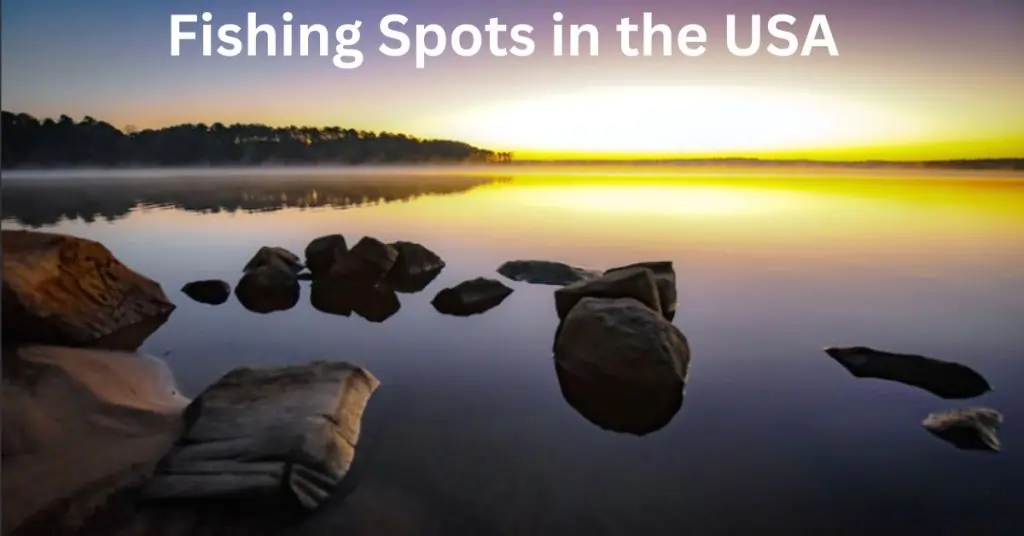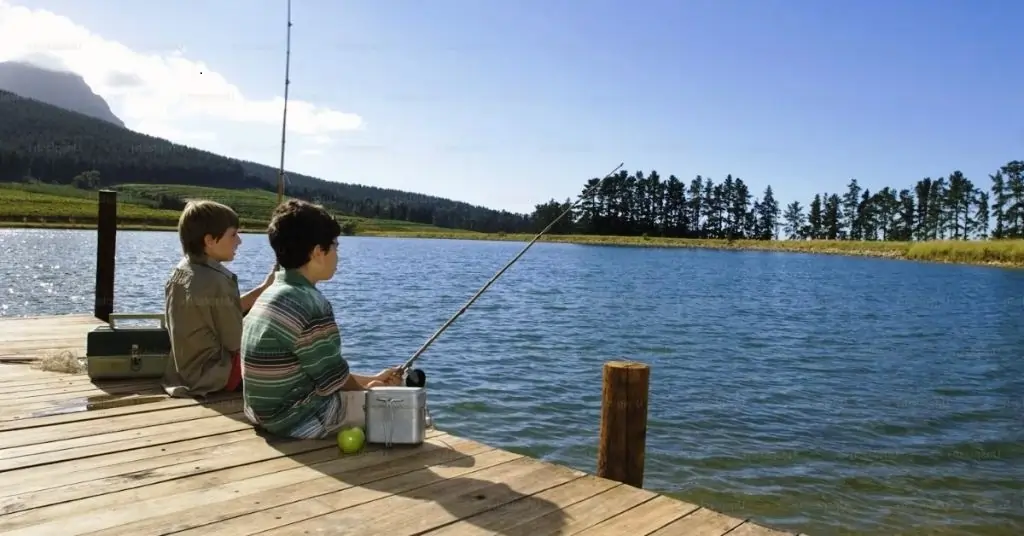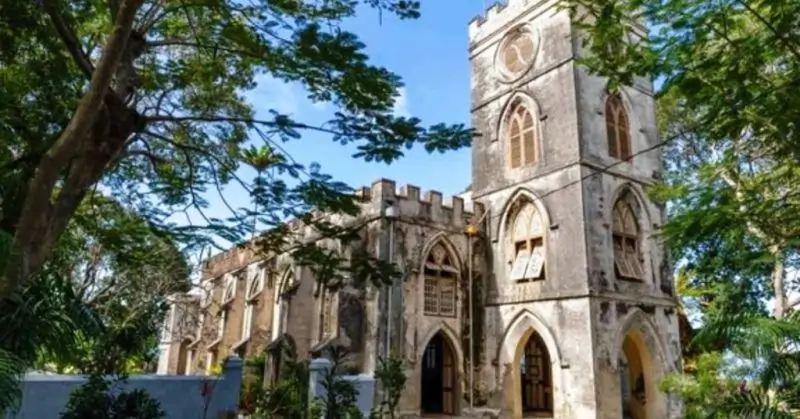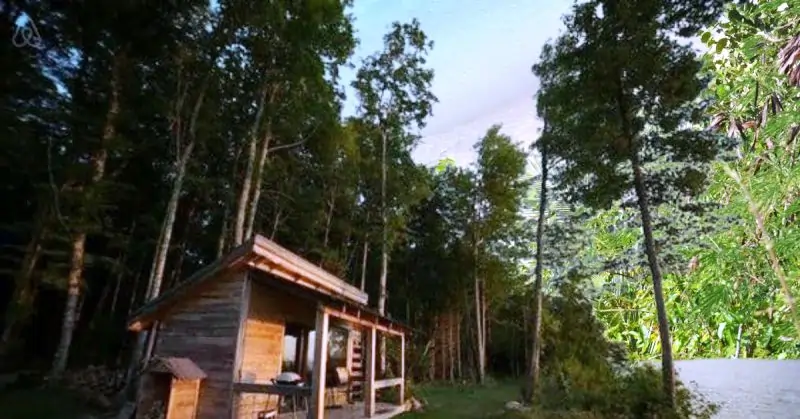For fishermen seeking solitude and scenic vistas, exploring uncharted fishing grounds offers an unforgettable experience. The tough Atlantic and Pacific coasts and the serene lakes and rivers found interior are only two examples of the many fishing grounds found throughout the United States. Due to this diversity, anglers can experience a range of fishing techniques, take on novel obstacles, and take in breathtaking inland and coastal vistas. Whether you’re fishing in the wide ocean or a peaceful creek, discovering these secret locations can make a typical fishing trip into an incredible adventure.
10 Best Fishing Spots in the USA
Miami, Florida – Fishing Guide
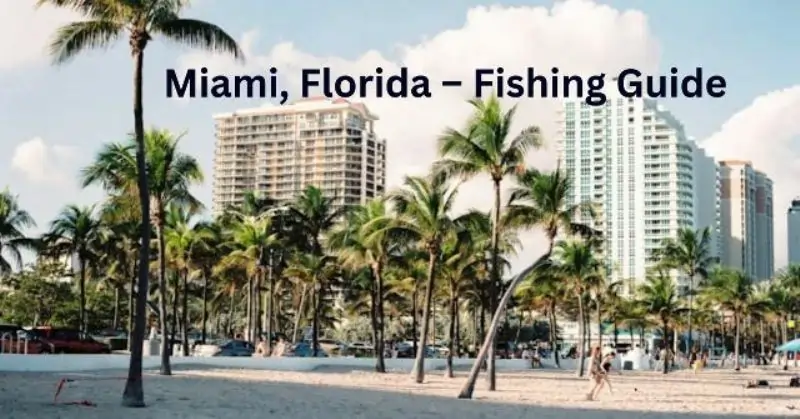
| Category | Details |
|---|---|
| Detailed Location Information | Hidden Spots: Explore Virginia Key and Key Biscayne for quieter fishing spots with abundant marine life. |
| Location Details | Focus on less crowded areas around Miami known for rich marine life, especially the flats and channels near Key Biscayne. |
| Types of Fish | Variety of fish including tarpon, bonefish, snapper, among others known to populate the waters. |
| Best Time to Visit | Optimal Fishing Seasons: The best times for fishing are spring and summer months, particularly from March to June, when the fish are most active. |
| Destination Insights | Getting There: Accessible by Miami International Airport. Use a car or rideshare to reach fishing spots. <br>Local Regulations and Permits: Licenses required from GoOutdoorsFlorida.com. Check local size and catch limits. |
| Recommended Gear and Bait | Gear and Bait: Suitable for light tackle and fly fishing. Live shrimp and crabs recommended. Gear rental costs around $20-$50 per day. |
| What to Pack for Your Fishing Trip | Sunscreen, hat, polarized sunglasses, breathable clothing, waterproof bag. |
| Boat Charter Options | Available for half-day ($500) and full-day ($1,200) trips. |
| Accommodation Recommendations | Ranges from budget hotels at $70/night to luxury resorts at $250/night. Waterfront rentals are popular. |
| Weather and Sea Conditions | Tropical climate with hot summers and mild winters. Plan for afternoon thunderstorms in summer. |
| Local Fishing Techniques | Flats fishing with light tackle or fly gear. Sight fishing for bonefish and tarpon is common. |
| What’s On Offer | Vibrant fishing culture, access to excellent saltwater fishing, plus Miami’s beach scenes, nightlife, and cultural offerings. |
| Approximate Expenses excluding flights | Expect to spend $200-$400 per day, excluding accommodations. |
Comprehensive Fishing Guide for San Diego, California
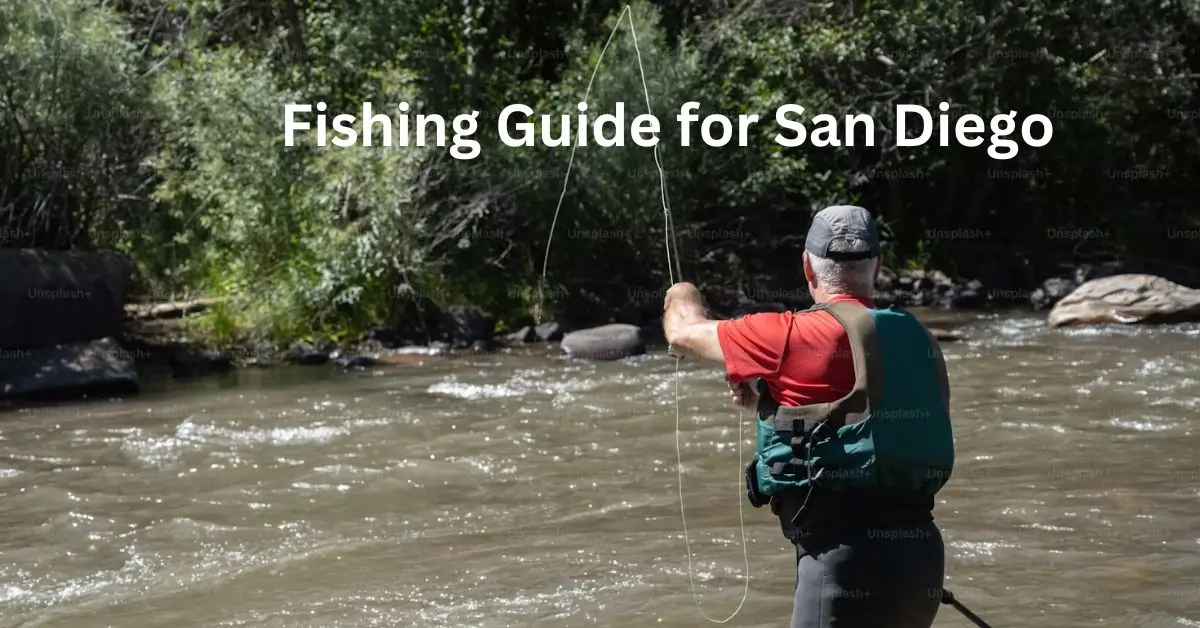
| Category | Details |
|---|---|
| Detailed Location Information | Lesser-Known Piers and Beaches: Explore the quieter fishing spots like Shelter Island Pier, Ocean Beach Pier, and the shores around La Jolla. |
| Types of Fish | Commonly targeted species include yellowtail, bass, and mackerel, among others. |
| Local Fishing Culture | San Diego has a vibrant fishing community with active local clubs and annual fishing tournaments that celebrate maritime traditions. |
| Destination Insights | Getting There: Easily accessible via San Diego International Airport, with comprehensive public transport and car rentals available for local travel. |
| Best Fishing Season | Peak fishing seasons for species like halibut run from spring through fall, with May to September being particularly productive. |
| Local Regulations and Permits | Fishing licenses are required and can be purchased online at California Department of Fish and Wildlife. Check current regulations and size limits on their website. |
| Recommended Gear and Bait | For halibut, use live bait such as anchovies or sardines; gear rental can range from $20-$50 per day. Light tackle is recommended for pier fishing. |
| What to Pack for Your Fishing Trip | Essential items include a fishing license, sun protection, a basic first aid kit, suitable clothing for the weather, and your own tackle and bait if not renting. |
| Boat Charter Options | Charter services are available, with half-day trips starting around $100 per person and full-day trips averaging $200 per person. |
| Accommodation Recommendations | Options range from budget motels at approximately $70 per night to luxury hotels at $250+ per night. Waterfront vacation rentals are popular for extended stays. |
| Weather and Sea Conditions | Expect mild to warm weather most of the year, with occasional fog and cooler temperatures in winter. Sea conditions vary; always check local marine forecasts. |
| Local Fishing Techniques | Local techniques include surf fishing, pier fishing, and deep-sea fishing. For surf fishing, use heavy sinkers to keep the bait in the surf zone. |
| What’s On Offer | San Diego offers a rich mix of fishing environments from deep sea to bay fishing, along with vibrant city life, beaches, and cultural attractions. |
| Approximate Expenses excluding flights | Daily expenses can vary, but plan on approximately $150-$300 per day, excluding accommodations, based on activities and dining choices. |
Detailed Fishing Guide: Seattle, Washington
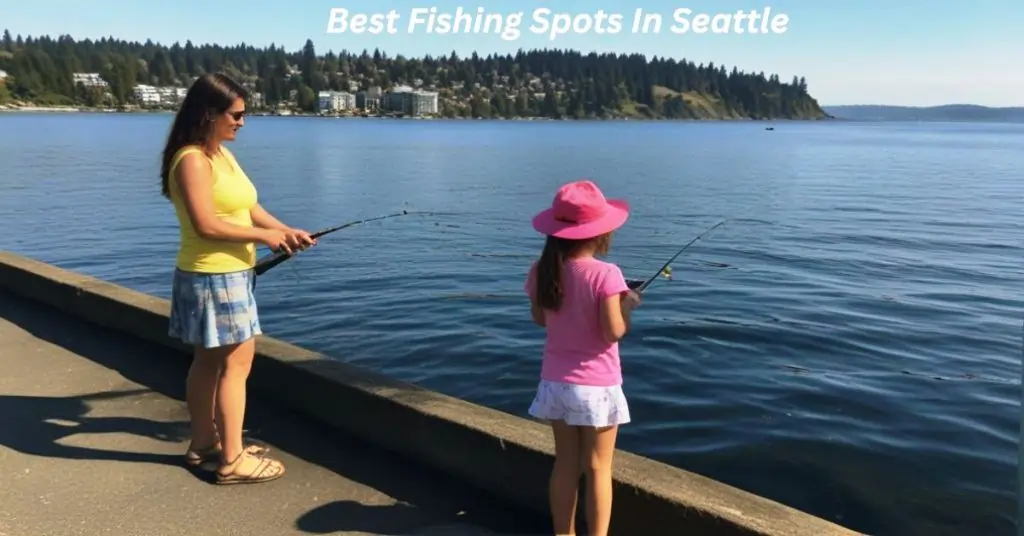
| Category | Details |
|---|---|
| Detailed Location Information | Secluded Spots: Explore lesser-known areas in Puget Sound like Elliott Bay, Shilshole Bay, and the waters around Bainbridge Island for a more isolated fishing experience. |
| Types of Fish | Seattle waters are rich with salmon, halibut, and lingcod. |
| Fishing Charters and Tours | Private and small group charters are available. Popular options include All Rivers & Saltwater Charters and Emerald Water Anglers, with prices ranging from $200 to $400 per person. |
| Destination Insights | Getting There: Seattle is accessible via Seattle-Tacoma International Airport, with extensive public transportation options and car rentals for reaching fishing locations. |
| Best Fishing Season | Peak season for halibut is April to June. For salmon, July to September offers the best catch rates. |
| Local Regulations and Permits | Fishing licenses are required and can be purchased online at Washington Department of Fish and Wildlife. Check for current size and catch limits. |
| Recommended Gear and Bait | For halibut, use heavy rods and circle hooks; bait with herring or octopus. Gear rental can cost around $40-$100 per day, depending on quality. |
| What to Pack for Your Fishing Trip | Include waterproof clothing, non-slip shoes, sunscreen, a hat, and sunglasses. |
| Boat Charter Options | Charters typically offer half-day or full-day trips, costing approximately $200-$600 depending on the length of the trip and services provided. |
| Accommodation Recommendations | Accommodations range from budget options at around $100 per night to luxury hotels starting at $300 per night. Waterfront rentals are also available for an immersive experience. |
| Weather and Sea Conditions | Seattle has a maritime climate with mild, wet winters and cool summers. Always check local weather updates and sea conditions before heading out. |
| Local Fishing Techniques | Use downriggers for deep-water species like halibut and lingcod. For salmon, trolling with flashers and bait is effective. |
| What’s On Offer | Seattle offers a vibrant fishing culture with access to diverse marine life, along with stunning natural scenery and a rich maritime history. |
| Approximate Expenses excluding flights | Daily expenses, excluding accommodations, can range from $150 to $400 depending on fishing activities and dining choices. |
Detailed Fishing Guide: Ozark Mountains Area
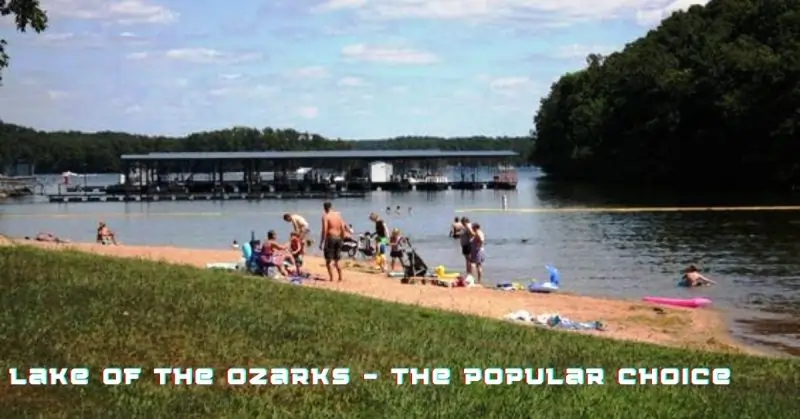
| Category | Details |
|---|---|
| Detailed Location Information | Hidden Freshwater Spots: Explore secluded fishing spots along the Buffalo National River and the White River, known for their clear waters and peaceful surroundings. |
| Types of Fish | The area is renowned for trout and bass. Specifically, rainbow trout, brown trout, and largemouth bass are common catches. |
| Tips for Fishing in Rivers and Lakes | Use light tackle for trout in fast-moving waters, and heavier gear for bass in deeper, still waters. Fly fishing is highly effective for trout in these rivers. |
| Destination Insights | Getting There: The Ozark Mountains are accessible via major highways and near airports like Springfield-Branson National Airport. Car rental is recommended to reach more remote areas. |
| Best Fishing Season | The best fishing seasons extend from early spring to late autumn, with peak trout fishing in the spring and fall. |
| Local Regulations and Permits | Fishing licenses are required and can be obtained online at Missouri Department of Conservation. Check the website for specific regulations and size limits. |
| Recommended Gear and Bait | Recommended gear includes spinning reels and lightweight rods for trout, with artificial flies and small lures. Gear rental options are available in local towns, typically costing $20-$50 per day. |
| What to Pack for Your Fishing Trip | Essential items include waterproof gear, a first aid kit, insect repellent, and appropriate clothing for variable mountain weather. |
| Boat Charter Options | Boat rentals are available on larger lakes like Bull Shoals Lake, with costs around $100-$250 per day depending on the boat size and amenities. |
| Accommodation Recommendations | Accommodations range from camping sites at about $15-$30 per night to cozy mountain cabins starting at $100 per night. There are also full-service resorts with fishing packages. |
| Weather and Sea Conditions | Weather in the Ozarks can change rapidly; spring and fall can be particularly unpredictable. Always check current weather conditions before heading out. |
| Local Fishing Techniques | Drift fishing in rivers and trolling in lakes are popular. For fly fishing, focus on early mornings and late evenings for the best activity. |
| What’s On Offer | The Ozarks offer a combination of scenic beauty, diverse fish populations, and excellent fishing conditions, making it a top destination for nature lovers and angling enthusiasts. |
| Approximate Expenses excluding flights | Expect to spend around $100-$300 per day, depending on accommodation choices, dining, and fishing activities, excluding personal gear and travel to the region. |
Detailed Fishing Guide: New Orleans, Louisiana
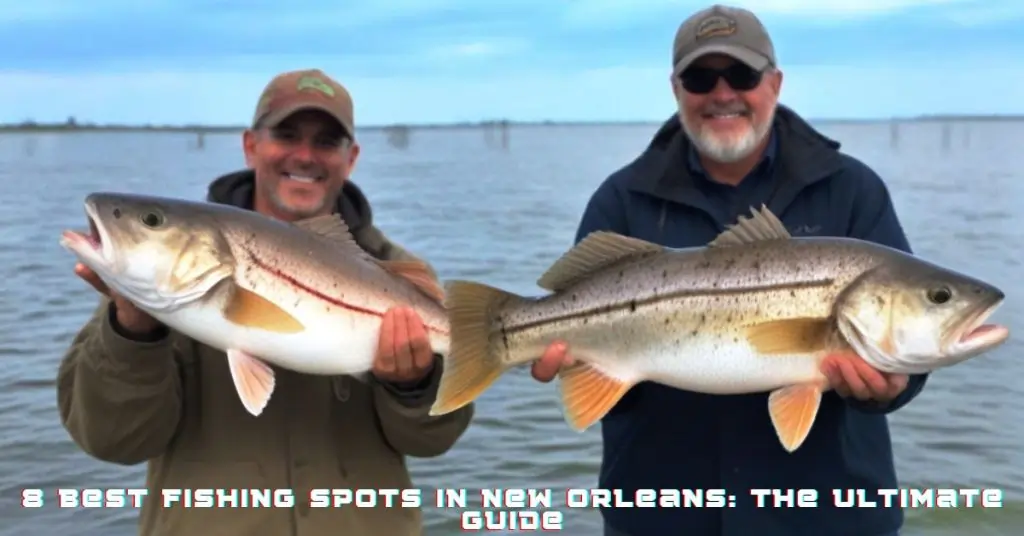
| Category | Details |
|---|---|
| Detailed Location Information | Lesser-Known Bayous and Marshes: Explore areas like Bayou Sauvage, the largest urban wildlife refuge in the U.S., or the remote marshes of Barataria Preserve for a secluded fishing experience away from the city’s hustle. |
| Types of Fish | Commonly targeted species include redfish, speckled trout, and flounder, which thrive in the brackish waters of the region. |
| Cultural Angling Tips | Local practices include using live bait such as shrimp or minnows for speckled trout and casting near the reeds for redfish. Local anglers often use popping corks to attract fish. |
| Destination Insights | Getting There: New Orleans is well-connected by Louis Armstrong New Orleans International Airport, with easy access to fishing spots via car rental or local transport services. |
| Best Fishing Season | The best time for fishing in New Orleans is from early spring through late fall, with peak seasons for redfish and speckled trout in the warmer months from May to September. |
| Local Regulations and Permits | A fishing license is required, which can be purchased online at Louisiana Department of Wildlife and Fisheries. Check this site for up-to-date regulations and size limits. |
| Recommended Gear and Bait | Light to medium tackle is suitable for most local fish; live bait like shrimp or crawfish is often most effective. Gear rental costs can vary, generally around $30-$50 per day from local outfitters. |
| What to Pack for Your Fishing Trip | Pack sunscreen, insect repellent, a hat, water-resistant clothing, and sturdy waterproof boots or waders. |
| Boat Charter Options | Various charter services offer guided fishing trips in the bayous and marshes, with costs ranging from $200 to $600 per day depending on the length of the trip and group size. |
| Accommodation Recommendations | Options range from budget-friendly hotels starting at around $70 per night to more luxurious stays from $150 upwards. Consider staying near fishing hotspots like Jean Lafitte or St. Bernard Parish for easy access. |
| Weather and Sea Conditions | Typical weather includes hot, humid summers and mild winters. Rain is frequent, so waterproof gear is essential. Always check the local weather forecast before planning your trip. |
| Local Fishing Techniques | Techniques such as trolling along the shallow edges of marshes and using surface lures in the early morning or late evening are effective. |
| What’s On Offer | New Orleans offers a unique blend of cultural experiences and excellent fishing opportunities, perfect for those looking to immerse in local traditions while enjoying abundant fishing. |
| Approximate Expenses excluding flights | Expect daily expenses to range from $100 to $300, depending on your choice of accommodations, charter services, and dining. |
Detailed Fishing Guide: Ketchikan, Alaska
| Category | Details |
|---|---|
| Detailed Location Information | Remote Areas: Explore fishing areas accessible only by boat such as Misty Fjords National Monument and the waters around Revillagigedo Island. |
| Types of Fish | Focus on catching Pacific salmon (King, Silver, Pink) and halibut. |
| Unique Fishing Experiences | Experience wilderness fishing in Alaska’s untouched landscapes, where you can enjoy not only the thrill of the catch but also the serene beauty of the natural surroundings. |
| Destination Insights | Getting There: Ketchikan is accessible via Ketchikan International Airport, with ferry and boat services available to remote fishing areas. |
| Best Fishing Season | The best season for salmon is June through August, while halibut peaks from May to September. |
| Local Regulations and Permits | Fishing licenses required; can be purchased online at Alaska Department of Fish and Game. Check this site for detailed regulations, size, and catch limits. |
| Recommended Gear and Bait | Use deep-sea fishing gear for halibut and lighter tackle for salmon. Bait with herring or salmon roe. Gear rental from local outfitters typically costs $50-$100 per day. |
| What to Pack for Your Fishing Trip | Essentials include waterproof clothing, layers for changing conditions, a sturdy hat, gloves, and polarized sunglasses. |
| Boat Charter Options | Charter services for guided fishing trips are available, ranging from $250 to $600 per day depending on the duration and type of trip. |
| Accommodation Recommendations | Lodging options range from basic cabins at around $100 per night to full-service fishing lodges that can cost upwards of $300 per night, often including meals and some fishing equipment. |
| Weather and Sea Conditions | Expect variable and often harsh weather; conditions can change rapidly, with cold temperatures even in summer. Always prepare for rain and wind. |
| Local Fishing Techniques | Downrigging for halibut and trolling for salmon are common techniques. Local guides can provide insight into effective strategies for Ketchikan’s unique environment. |
| What’s On Offer | Ketchikan provides a robust fishing adventure amidst the stunning backdrop of Alaska’s wilderness, offering a challenging and rewarding experience for anglers of all levels. |
| Approximate Expenses excluding flights | Daily expenses, excluding accommodations, can range from $200 to $500, depending on charter services, gear rental, and personal spending. |
Detailed Fishing Guide: Finger Lakes, New York
| Category | Details |
|---|---|
| Detailed Location Information | Quiet Fishing Spots: Recommended spots include the southern shores of Seneca Lake and the quieter western end of Cayuga Lake, ideal for those seeking solitude while fishing. |
| Types of Fish | The Finger Lakes are home to trout (rainbow, brown, and lake), northern pike, and largemouth and smallmouth bass. |
| Seasonal Fishing Tips | Spring and fall are optimal for trout when the water is cooler. Summer brings excellent bass fishing opportunities, while pike can be targeted effectively in both spring and autumn. |
| Destination Insights | Getting There: The region is easily accessible by car from major cities like New York City and Buffalo. The closest major airports are in Syracuse and Rochester, with car rentals available for reaching more remote areas. |
| Best Fishing Season | The best overall fishing season spans from early spring (March) to late fall (November), with peak periods varying by fish species. |
| Local Regulations and Permits | Fishing licenses are required and can be purchased online at New York State Department of Environmental Conservation. Check this site for specific fishing regulations and size limits. |
| Recommended Gear and Bait | Gear recommendations include lightweight rods for trout and heavier setups for pike and bass. Live baits such as minnows, worms, and artificial lures are effective. Gear rental is available, generally costing $20-$50 per day. |
| What to Pack for Your Fishing Trip | Essentials include appropriate clothing for variable weather, waterproof footwear, a hat, sunscreen, and insect repellent. |
| Boat Charter Options | Boat rentals and fishing charters are available, especially on larger lakes like Seneca and Cayuga. Costs vary, with a typical half-day rental priced around $100-$200. |
| Accommodation Recommendations | Lodging options range from lakeside cabins and cottages starting at $100 per night to full-service resorts which may cost $200 per night or more. Many places offer direct lake access. |
| Weather and Sea Conditions | The region experiences a temperate climate. Summers are warm and humid, while spring and fall can be cool and rainy. Always check current weather forecasts prior to your trip. |
| Local Fishing Techniques | Effective techniques include trolling for trout and bass, using topwater lures for bass during warmer months, and ice fishing for pike and panfish during the winter. |
| What’s On Offer | The Finger Lakes offer a tranquil fishing experience combined with the opportunity to enjoy local wine tours, hiking, and boating, making it a popular destination for both anglers and their families. |
| Approximate Expenses excluding flights | Expect daily expenses, excluding accommodations, to range from $150 to $300 based on fishing activities, dining, and local travel. |
Detailed Fishing Guide: Central Texas Rivers
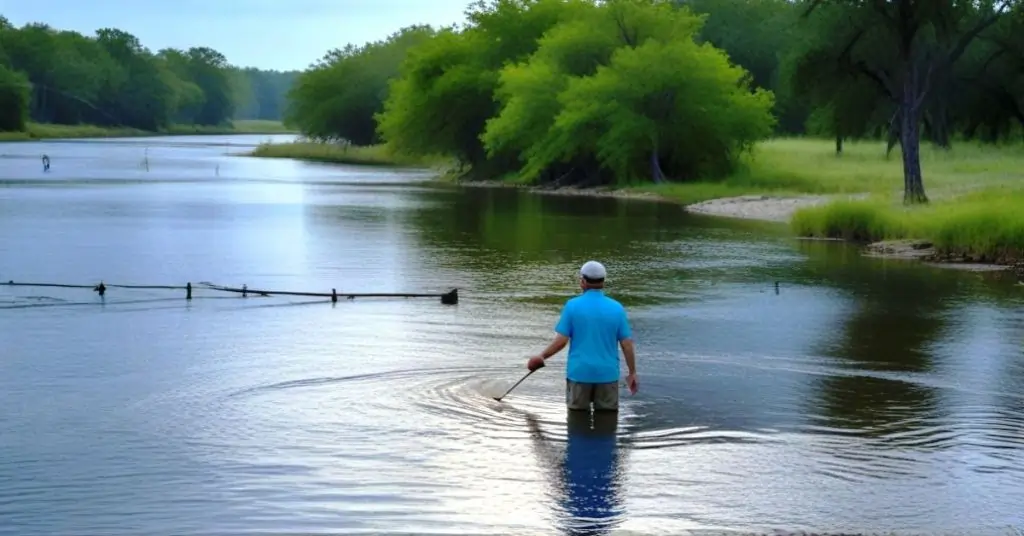
| Category | Details |
|---|---|
| Detailed Location Information | Rivers in Hill Country: Notable rivers include the Llano River, Guadalupe River, and San Marcos River. These rivers offer access to secluded fishing spots with abundant natural surroundings. |
| Types of Fish | The primary targets in these rivers are bass, including largemouth and Guadalupe bass, and catfish. |
| River Fishing Techniques | Successful techniques include fly fishing for bass using streamers and topwater lures early in the morning or late in the evening. For catfish, baitcasting with live bait such as nightcrawlers or minnows is effective. |
| Destination Insights | Getting There: The Texas Hill Country is easily accessible by car from major cities like Austin and San Antonio. The closest major airports are Austin-Bergstrom International Airport and San Antonio International Airport. |
| Best Fishing Season | Bass fishing is best in the spring and fall when temperatures are moderate. Catfish can be targeted effectively from late spring through early fall. |
| Local Regulations and Permits | A Texas fishing license is required, which can be purchased online at Texas Parks & Wildlife Department. Check this site for current regulations regarding size and catch limits. |
| Recommended Gear and Bait | Gear recommendations include medium-action spinning or baitcasting setups. Rental gear can be obtained from local outfitters, typically costing $30-$50 per day. |
| What to Pack for Your Fishing Trip | Essential items include a hat, UV-protective clothing, sunscreen, insect repellent, and plenty of water. Also, pack your fishing gear unless planning to rent. |
| Boat Charter Options | While boat fishing is less common on smaller rivers, kayak rentals are available and provide excellent access to prime fishing spots. Kayak rental fees are about $40-$60 per day. |
| Accommodation Recommendations | Accommodation options range from camping sites at around $20-$40 per night to local bed and breakfasts and hotels, with prices ranging from $80 to $150 per night. |
| Weather and Sea Conditions | Weather in Central Texas can be highly variable. Expect hot summers and mild winters. River conditions are generally calm, but always check local weather forecasts and river flow rates before heading out. |
| Local Fishing Techniques | For bass, focus on structure like logs or rock outcrops. For catfish, deeper river bends or mouths of feeder streams are productive areas. |
| What’s On Offer | Central Texas rivers offer a tranquil fishing experience away from the bustling city life, coupled with the chance to catch some of the best freshwater fish in the state. |
| Approximate Expenses excluding flights | Daily expenses, excluding accommodations, can range from $100 to $200, depending on fishing activities, kayak rentals, and dining choices. |
Detailed Fishing Guide: Outer Banks, North Carolina
| Category | Details |
|---|---|
| Detailed Location Information | Secluded Spots: Explore fishing opportunities along the less crowded northern shores of Duck and Corolla, or try the southern end near Cape Point for a more isolated experience. |
| Types of Fish | Commonly targeted species include sea bass, mackerel, and bluefish, which are abundant around these islands. |
| Shore Fishing Tips | Use heavy sinkers to keep bait at the bottom and consider using lures that mimic the small fish or crustaceans these fish prey on. Early morning or late evening tend to be the most productive times for shore fishing. |
| Destination Insights | Getting There: The Outer Banks are accessible by car via Route 12, which runs along the islands. The nearest major airport is Norfolk International Airport in Virginia, with car rentals available for the drive to the islands. |
| Best Fishing Season | The peak fishing seasons are spring and fall, especially May and September, when migrations increase the variety and number of fish near the shores. |
| Local Regulations and Permits | A North Carolina fishing license is required, which can be purchased online at North Carolina Wildlife Resources Commission. Check this website for updated regulations and size limits. |
| Recommended Gear and Bait | Medium to heavy rods are recommended, with bait such as cut mullet for bluefish, and jigs or spoons for sea bass and mackerel. Gear rentals are available from local outfitters, generally costing around $20-$40 per day. |
| What to Pack for Your Fishing Trip | Essential items include a robust tackle box, extra line, bait, sunscreen, a hat, and a lightweight rain jacket. Also, pack water and snacks, especially if planning a full day on the beach. |
| Boat Charter Options | Charter services for deeper water fishing trips are available, with costs typically ranging from $400 for half-day trips to $800 or more for full-day excursions depending on the size of the boat and services provided. |
| Accommodation Recommendations | Accommodations include beachfront cottages, which start at about $100 per night off-season to $250+ during peak season, and hotels with average prices from $150 per night. |
| Weather and Sea Conditions | Weather in the Outer Banks can be variable, with mild winters and hot, humid summers. Sea conditions can change quickly, and it’s crucial to check local marine forecasts before heading out. |
| Local Fishing Techniques | Casting from piers with spoons and bottom rigs can be very effective. Surf fishing requires heavy tackle and knowledge of tides to optimize your chances of a good catch. |
| What’s On Offer | The Outer Banks offer a diverse fishing experience combined with stunning natural beauty and historical sites, making it ideal for family trips or serious anglers looking to land a big catch. |
| Approximate Expenses excluding flights | Daily expenses, excluding accommodations, can range from $100 to $300, depending on charter services and dining choices. |
Detailed Fishing Guide: Upper Peninsula, Michigan
| Category | Details |
|---|---|
| Detailed Location Information | Hidden Gems: Explore less-traveled fishing locales such as the secluded shores of Lake Gogebic, or the remote waters of the Two Hearted River, famed for its trout. |
| Types of Fish | Predominant species include walleye, northern pike, and smallmouth bass, thriving in the region’s diverse water bodies. |
| Wilderness Fishing | The appeal of fishing here lies in its vast, untouched natural landscapes, providing a peaceful fishing experience away from crowded spots, with the chance to engage with pristine nature. |
| Destination Insights | Getting There: Accessible via highways connecting to major cities like Marquette and Sault Ste. Marie. The closest major airports are in Marquette (Sawyer International Airport) and Sault Ste. Marie. |
| Best Fishing Season | Peak fishing seasons include late spring through early fall for bass and walleye, with ice fishing for pike being popular in winter. |
| Local Regulations and Permits | A Michigan fishing license is required, available online at Michigan Department of Natural Resources. Be sure to check for local size and catch limits. |
| Recommended Gear and Bait | Suggested gear includes medium-action spinning reels for bass and heavier tackle for pike and walleye. Common baits include live minnows, worms, and artificial lures. Gear rental can cost approximately $30-$60 per day. |
| What to Pack for Your Fishing Trip | Essential gear includes waterproof clothing, sturdy boots, insect repellent, a fishing hat, and sunscreen. Also, pack all necessary fishing tackle and safety equipment. |
| Boat Charter Options | Boat rentals and fishing charters are available, particularly on larger lakes like Superior and Michigan, with costs ranging from $200 to $500 for day trips. |
| Accommodation Recommendations | Accommodations range from rustic cabins at about $75 per night to more comfortable lodge options around $150 per night. Many places offer direct access to fishing spots. |
| Weather and Sea Conditions | Weather can be unpredictable, with cold winters and mild summers. Lake conditions can vary; always check local weather and water conditions before setting out. |
| Local Fishing Techniques | Effective techniques include trolling for walleye in deeper waters, using topwater lures for bass in shallower lakes, and ice fishing for pike during the winter months. |
| What’s On Offer | The Upper Peninsula offers a tranquil escape with abundant fishing, scenic hikes, and the chance to explore one of America’s last great wildernesses. |
| Approximate Expenses excluding flights | Daily expenses can vary, typically ranging from $100 to $300, depending on accommodation choice, fishing activities, and personal spending habits. |
FAQ on “Best Fishing Spots in the USA”
Q-What is the fishing capital of the US?
A- Islamorada in Florida is often called the fishing capital of the US due to its diverse and abundant game fish.
Q- Which area is famous for fishing?
A- The Florida Keys are famous for offering some of the best fishing experiences in the United States.
Q- What fish is popular in America?
A- Bass is one of the most popular fish among American anglers.
Q- Why is Florida fishing so good?
A- Florida’s extensive coastline, warm climate, and rich marine habitats create ideal fishing conditions year-round.
Conclusion
In short, visiting lesser-known fishing spots is a great way to avoid crowds and improve your fishing trips These secluded locations provide tranquility, fresh difficulties, and the potential to increase the excitement of fishing. I highly recommend visiting these lesser-known locations to enjoy the stunning landscapes and abundant fishing they have to offer. Remember to let other fishermen know about what you discover. By doing this, you may foster the growth of a vibrant fishing community that loves exploring new areas and taking pleasure in the excitement of fishing in pristine settings.
